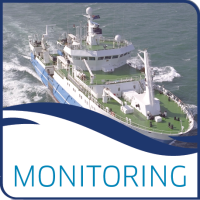Scottish Marine and Freshwater Science Vol 11 No 5
The Loch Creran SAC was established to protect the Priority Marine Features (PMFs) such as marine biogenic reef consisting of the calcareous tube-worm Serpula vermicularis, and the horse mussel Modiolus modiolus. Loch Creran is also designated as a Marine Protected Area (MPA), conferred to protect the flame shell (Limaria hians) beds and other geodiversity features. Loch Creran contains the only example of well-developed serpulid reefs in the MPA network in Europe.
The invasive colonial sea squirt Didemnum vexillum (Dvex) was first recorded on an oyster farm in Loch Creran in 2016. Since 2016, Marine Scotland Science (MSS) has undertaken annual monitoring surveys to assess the distribution of Dvex at the oyster farm and in the wider Loch Creran area. In view of Dvex possible impact on the PMFs present in the loch, Scottish Natural Heritage (SNH) has carried out surveys of the subtidal environment, by establishing a diving programme to monitor spread. The surveys described in this report complement ongoing annual surveys of the impacted oyster farm and cover the wider Loch Creran area, incorporating intertidal sections of shore not previously surveyed.
All suspicious samples collected during the shore intertidal survey were tested and only one sample collected was confirmed as Dvex by real time PCR and sequencing. The subtidal survey did not reported any suspicious colonies.
Data and Resources
| Field | Value |
|---|---|
| Publisher | |
| Modified | 2020-07-01 |
| Release Date | 2020-07-01 |
| Identifier | c0fec0c5-96d6-4e0a-8f31-1e6efc3c794b |
| Spatial / Geographical Coverage Location | Scotland |
| Temporal Coverage | 2019-09-01 to 2019-09-30 |
| License | UK Open Government Licence (OGL) |
| Author | |
| Data Dictionary | Shore surveys Shore surveys broadly followed the method outlined in the previous MSS report https://data.marine.gov.scot/sites/default/files//SMFS%200910.pdf and covered additional shoreline to that surveyed in 2016. The shore-based intertidal survey locations are shown in Figure 1. Each survey area was surveyed by a team of two to three surveyors between two hours before and two hours after low tide. Boat surveys A Rigid Inflatable Boat (RIB) survey of Loch Creran took place on 2-4 September 2019 to survey for the presence of Dvex on man-made intertidal and subtidal structures within the loch. Boat surveys involved repeating the boat survey of 2016 in accordance with the survey methodology in the MSS report https://data.marine.gov.scot/sites/default/files//SMFS%200911%20-%20upda.... A combination of visual inspection and a pole-cam was used in the survey. Pole-cam was recorded using a Go-Pro and reviewed in detail at a later date. A range of floating, natural and artificial hard structures were examined. Structures visited during the last (2016) boat survey were re-surveyed where these were still present. Tissue and water sample collection Tissue samples of suspicious organisms growing on substrates or seaweed were taken at various points around the loch (Table 1) with a view to rule out Dvex and attempt identification to species. Tissue samples were stored at -20ºC prior to DNA extraction. Water samples (10 duplicates of 500 ml seawater per site) were collected using sterile bottles and filtered on site using 0.22um filters (Sterivex). Filters were stored in -20C until further processing. The water sample locations are summarised in Table 2. Water samples were collected for eDNA analyses which will be carried out by MSS staff at later date (data not shown in this report). |
| Contact Name | Marine Scotland |
| Contact Email | |
| Public Access Level | Public |


